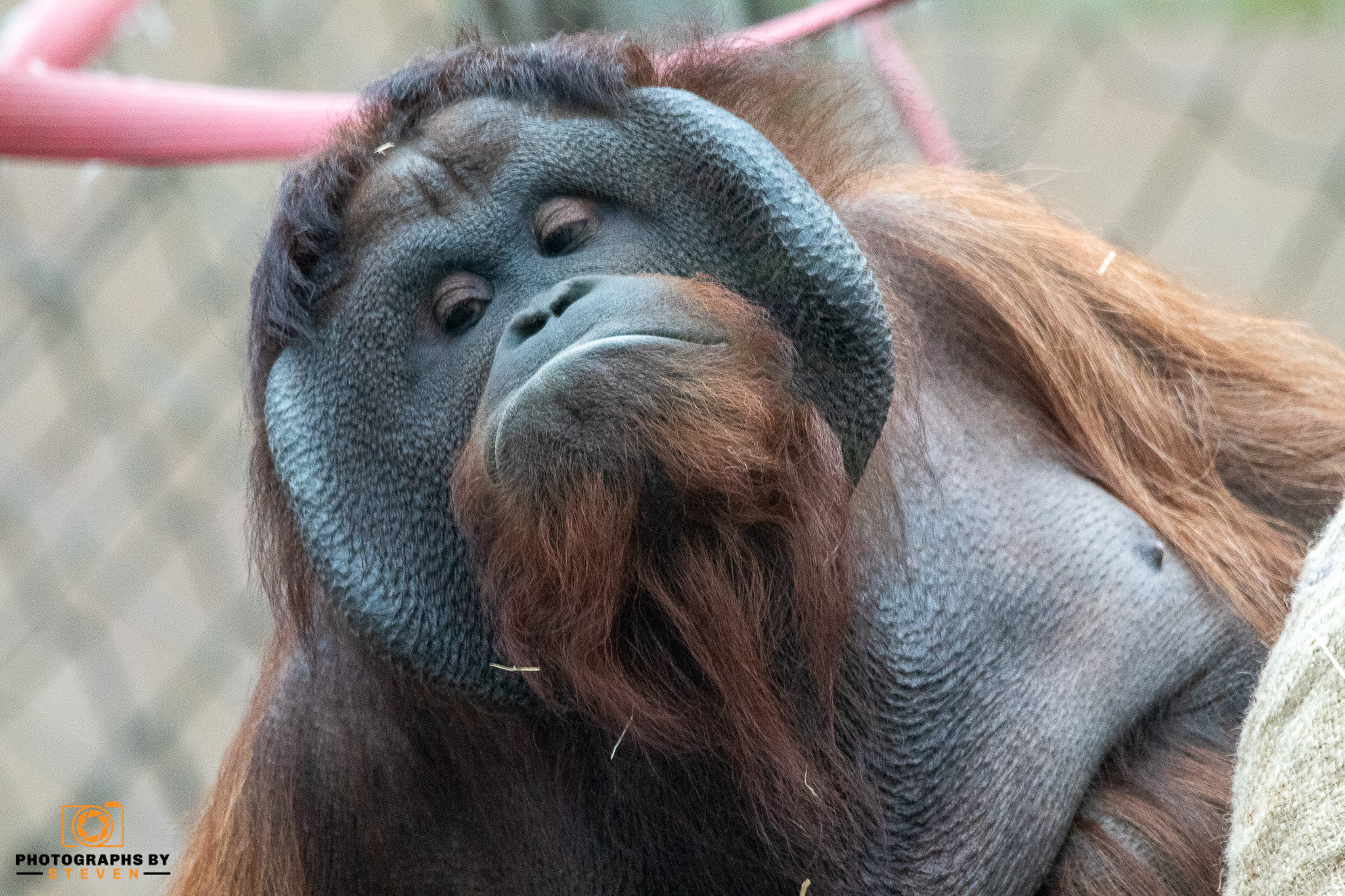Chimpanzees are omnivores, which means they consume both plants and animals. Chimpanzees are apes most closely related to humans, along with bonobos. They are highly social animals that care for their young for years and can live to be over 50 years old. Chimpanzees are our closest relatives, sharing 98% of our genes. Chimpanzees spend most of their time in the treetops in their natural habitat in Central African forests. Chimps usually travel on all fours when they come down to earth, though they can walk on their legs like humans for up to a mile. They use sticks to fish termites from mounds and leaves in bunches to soak up drinking water.
Physical description
Chimps have long arms that extend beyond their knees, opposable thumbs, and a vast mouth. The cheeks, ears, palms, and soles of the feet are bare skin, with brown to black hair covering the remainder of the body.
Chimpanzees usually move on the ground but prefer to stay in trees during the day, sleeping in homemade nests constructed of vegetation. This species' members walk "on all fours," but they can also move for more than a kilometre on their legs. Young people tend to swing from branch to branch.
How long do chimpanzees live?
Little Mamma, a captive female who died in 2017 at 76 to 82 years old, was the oldest chimp ever recorded. This world record holder lives significantly longer than the average captive chimp lifespan of 31.7 years for males and 38.7 years for females.
The average life expectancy of chimps in the wild is difficult to estimate, but a recent study of 306 chimps in Ngogo in Uganda's Kibale National Park found that they live for about 33 years. This is approximately twice as long as previous chimp groups have been discovered and about the same as the average human hunter-gatherer lifetime.
Chimps, can they walk on two legs?
Chimpanzees move around by climbing, swinging through trees, and walking on all fours (knuckle-walking), but they can also walk upright on two feet.
How intelligent are chimps?
Some chimps have learned primary human sign language. Washoe, a captive female chimp, learned American Sign Language (ASL) and has a vocabulary of 350 words.
What do chimpanzees eat?
Chimpanzees are omnivores who prefer fruit to all other foods. A chimp's diet consists primarily of plant fragments (seeds, leaves, roots, resin, and so on), but they will also consume insects, honey, birds and bird eggs, mammals, and even soil. Most startlingly, chimps have been hunting other primates and even committing newborn cannibalism. However, the average chimp's diet consists primarily of fruit and plant stuff, with insects and meat accounting for only 2% of the total.
How powerful are chimps?
Chimpanzees are enormously powerful, estimated to be four times stronger than humans of comparable size. They can reach up to 25 mph (40 kilometres per hour), yet that's not even what they're meant for.
Their arms are built to swing them through the trees, and they have a much higher proportion of fast-twitch muscle fibers, which appears to be the source of chimps' extraordinary strength.
Chimpanzees, can they use tools?
Chimpanzees are among the few animals known to use tools. This includes using sticks to extract termites from their mounds, stones to crack tasty open nuts, and leaf sponges to soak up drinking water.
Chimpanzees do they live in groups?
Chimpanzees live in fission-fusion societies, which means their social groups change in size and composition over time. They spend most of their time in small, temporary groups of only a few people known as 'parties.' Still, they also associate with a larger group known as a 'community.' Although they are rarely seen together in one place, all members of these multi-male, multi-female communities know each other individually and defend a standard home range together. Communities can have up to 150 people but have strict hierarchies with only one dominant alpha male.
Communication between chimps in the wild takes the form of facial expressions, gestures, and a large array of vocalizations, including screams, hoots, grunts, and roars. Males display excitement by standing erect, stamping or swaying, and shouting a chorus of screams. Chimps use louder calls and gestures for long-distance communication (such as drumming on tree buttresses) and quieter calls and facial expressions for short-distance communication. Similarities to human laughter and smiling might be seen in their "play panting" and grinning.



Leave me a comment
Thank you for reading my post, if you want to leave a comment, you can do so below.